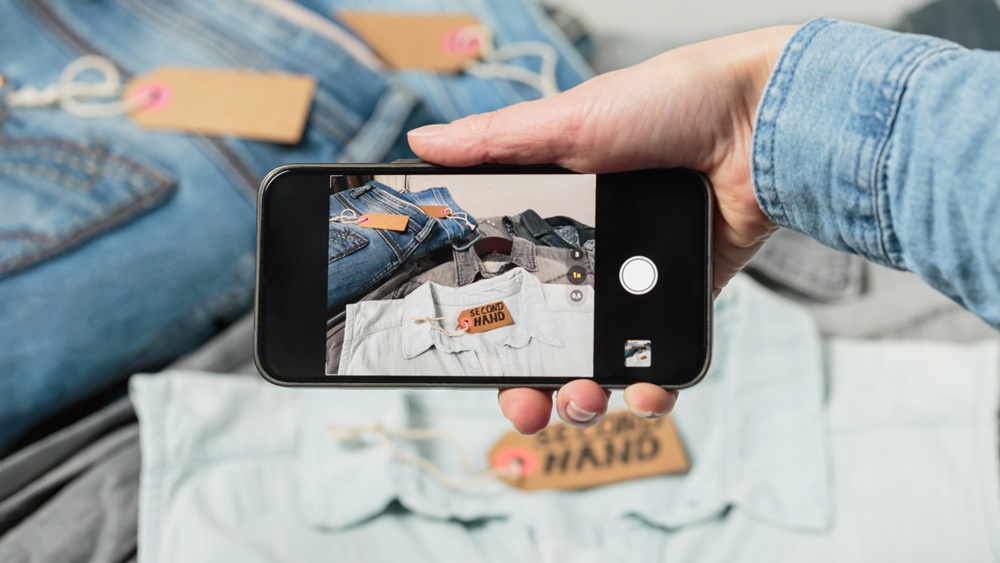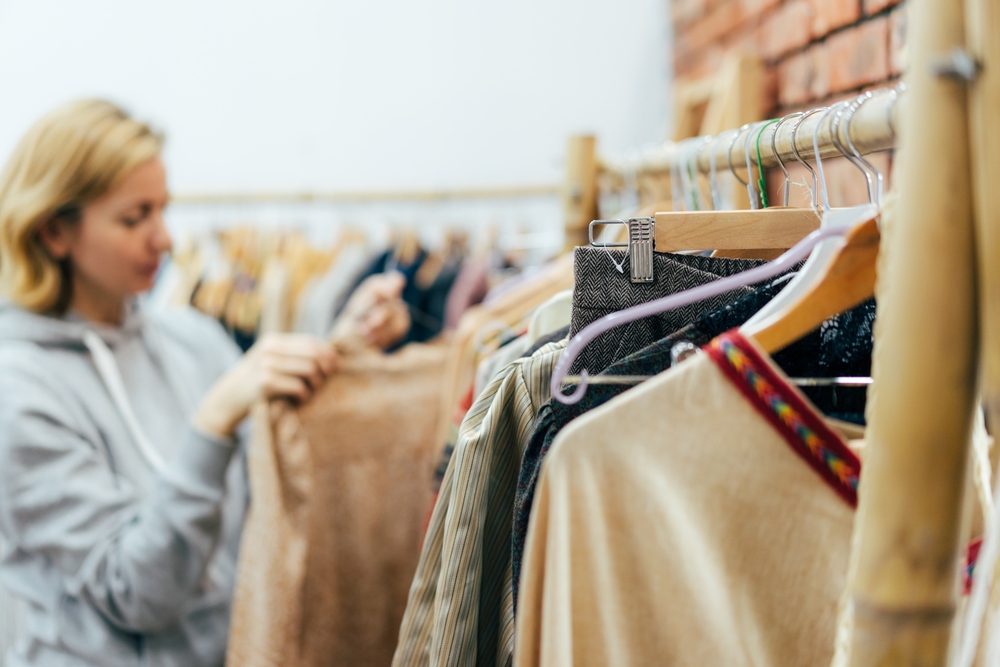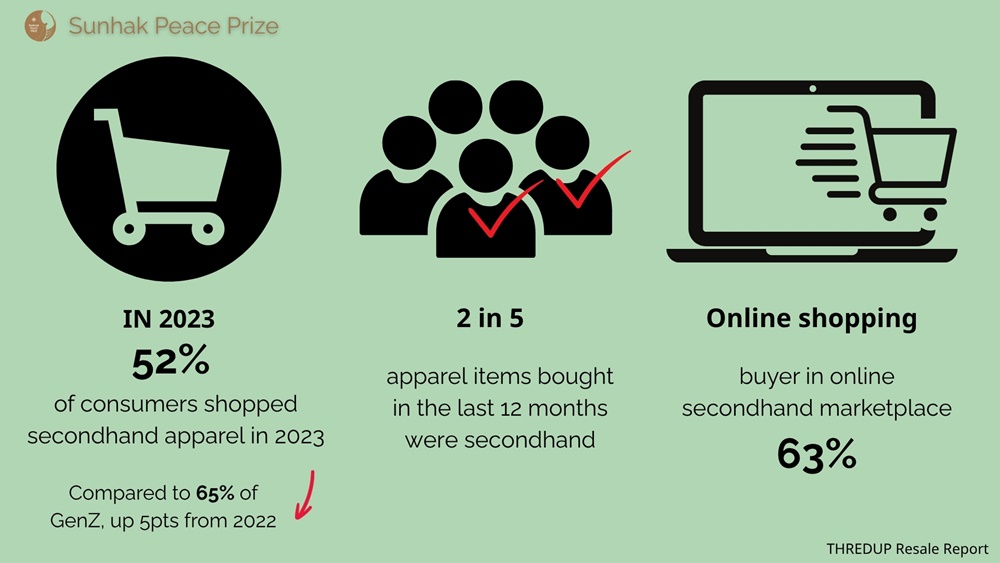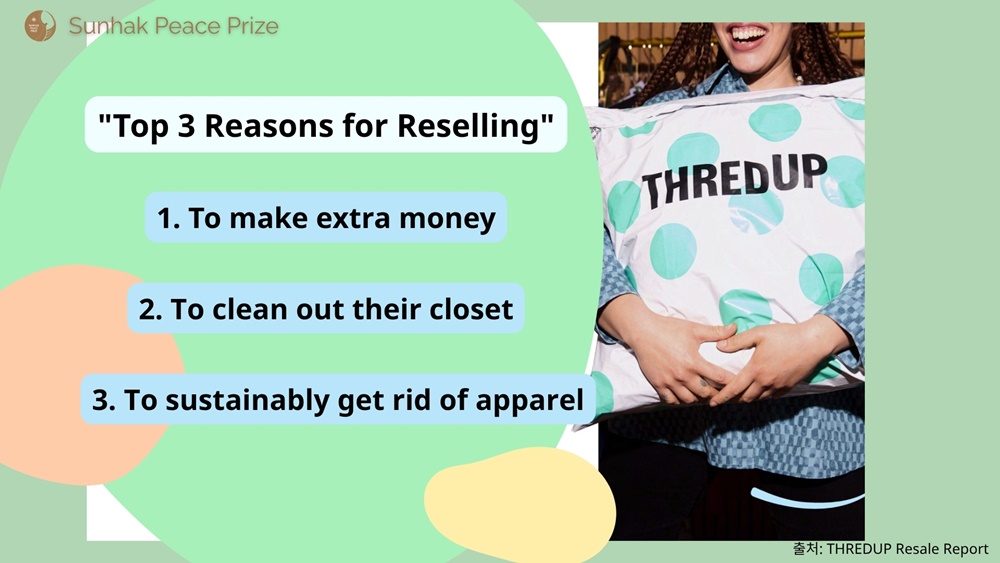Reselling and
upcycling are ways to practice sustainable fashion through ethical consumption
and environmental protection by either reselling secondhand items or creatively
transforming waste into new products. In this article, we explore the
definitions and importance of reselling and upcycling, the current market
status, and the enthusiastic participation of Generation Z.
―
Cardi B’s Vintage Chanel
―

(Source: instagram/iamcardib)
At the 2024 Met
Gala—one of the world’s most-watched fashion events—rapper Cardi B stole the
spotlight. Her dress was none other than a 1993 vintage Chanel gown, the very
design that supermodel Claudia Schiffer first walked the runway in 30 years
ago. Now, it has returned to the limelight with fresh meaning.
This gown
wasn’t just a nod to retro beauty—it carried a powerful message of sustainable
fashion.

“This isn’t just a beautiful dress; it’s a declaration of sustainability.”
The audience
cheered, and on social media the hashtags #SustainableFashion
and #VintageIsFuture spread like wildfire.
It’s not only Cardi B. Look at the styles teens and twenty-somethings love today—wide-leg jeans, mini shoulder bags, cropped shirts—and you’ll see familiar items making a comeback. The so-called Y2K trend is more than nostalgia. Behind it, young people are asking:
“What kind of footprint does this clothing leave on the planet?”
From that
question have sprung the new consumption trends of reselling
and upcycling.
―
What Are Reselling and Upcycling?
―
·Reselling: The culture of trading used products by selling them again.
·Upcycling: The practice of giving discarded items new life through creative ideas.

The OECD defines reselling as “the act of selling previously used products or owned items—often via digital platforms—as part of the circular economy.”
UNEP defines upcycling as “the process of transforming waste or unwanted
products into new resources or items with greater environmental value.”
Reselling and
upcycling represent a revived, circular identity in fashion.
―
Why Are Reselling and Upcycling Important?
―
Fashion can become a cycle of value—shifting from a source of pollution to part of the solution. The apparel industry is among the top polluters: UNEP reports that 92 million tons of textile waste are generated annually, accounting for about 10% of global carbon emissions

Reselling and upcycling offer small but powerful keys to solving this problem:
· Reselling secondhand items reduces carbon emissions by an average of 30%.
· Upcycling saves the resources and energy needed to produce new items.
· Both give rise to innovative designs and renewed emotional value.
Real-world brand examples make the impact clear:
· Patagonia: Uses discarded PET bottles and old garments to make new clothing.
· Freitag: Crafts bags from recycled truck tarpaulins.
· IKEA: Introduced a program to resell gently used furniture.
These initiatives reduce waste, circulate resources, and preserve emotional value—transforming fashion from a problem into part of the solution.
To learn more about the climate crisis, see: ↓↓↓ |
―
The Reselling and Upcycling Market Is Growing Rapidly
―
According to ThredUp’s 2024 report, the global secondhand apparel market reached approximately $197 billion in 2023. It’s growing at an average rate of 12% per year and is projected to exceed $350 billion by 2028—three times faster than the overall fashion industry.(ThredUp, 2024).
Key highlights:
· The secondhand market grew 18% in 2023 alone.
· By 2025, over 10% of the global apparel market is expected to consist of secondhand items.
In short,
resale fashion is not “old stuff” but a valuable consumption model and a
fast-growing market.

To learn more about sustainable consumption, see: ⇊ |
―
Gen Z Is All In on Secondhand Fashion
―

Gen Z really
embraces this trend. In 2023, 52% of all U.S. consumers bought secondhand
clothing; among Gen Z and Millennials, the figure jumped to 65%. Moreover, two
out of five shoppers reported that over 40% of the items they purchased were
secondhand.
Online resale dominates: 63% of secondhand buyers shop online (ThredUp 2024 Resale Report).
Gen Z’s favorite online resale channels:
· Social media: 23%
· Brand websites: 20%
· Live-commerce streams: 18%
· Brand-certified marketplaces: 20%
―
Beyond Profit: The Meaning of Reselling
―
In 2023, 25% of U.S. consumers resold clothing—rising to 33% among Gen Z and Millennials.(ThredUp 2024 Resale Report)

Why do people resell?
Is it just to make money?
1.
Pocket money: The top reason. Nearly
half of sellers used their earnings for everyday expenses like groceries, and
48% of Gen Z saved or invested their proceeds.
2.
Wardrobe decluttering: Selling unused clothes
helps free up space and improves closet organization.
3.
Environmental concern: Passing items on
instead of discarding them is inherently eco-friendly. Sellers take pride in
“keeping clothes out of the landfill.”
Thus, reselling
has become more than earning—it’s a sustainable lifestyle and a form of
self-expression.
―
Global Brands Must Adapt
or Fall Behind
―
Fashion and
tech companies have already made reselling and upcycling core strategies:

Fashion brands in transition:
·
Nike: Expanding products made
with “Nike Grind,” recycled from worn-out shoes.
·
Adidas: Released “Parley”
sneakers made from recycled ocean plastic.
·
Gucci, Chanel, Louis
Vuitton:
Partnering officially with resale platforms like KREAM or operating their own
resale channels.
Tech companies in transition:
·
Apple: Offers “Trade In” to
collect and resell used iPhones.
·
Samsung: Experimenting with
“Galaxy Upcycling” to turn old smartphones into IoT devices.
These moves
aren’t just green marketing—they’re essential sustainability strategies for
brand survival, as Gen Z trusts and supports brands that lead in this area.
To learn more about sustainable management, see: ↓↓↓ |
―
A New Future for Fashion, Declared by the International Community
―
International
organizations and governments now actively promote reselling and
upcycling—backed by law and policy, not just goodwill:
·
UNEP (2024): Adopted a “Sustainable
Fashion Pact,” recommending reselling and upcycling.
·
EU (from 2025): Will require all
fast-fashion brands to establish closed-loop systems for making, collecting,
and recycling garments.
·
U.S. & Japan: Planning tax incentives
for secondhand purchasers.
·
World Bank: Provides
circular-economy training and support to developing countries.
Reselling and upcycling have grown beyond personal preference into a global movement.
―
Actions We Can All Take
―
The fashion
industry accounts for 10% of global carbon emissions—more than all
international flights and maritime shipping combined. The choice of today’s
outfit could be a small declaration that shapes the planet’s future. Now, our
individual actions matter more than ever.

1. Use secondhand marketplaces.
2. Buy from upcycling brands.
3. Refashion or repair old clothes yourself.
4. Consider the investment value of luxury resale markets (KREAM, StockX).
5. Purchase refurbished electronics and maintain them.
6. Donate clothing, appliances, and furniture to recycling centers.
7. Prioritize sustainable brands.
8. Visit local upcycling workshops.
9. Use reusable packaging and eco-friendly containers.
10. Share zero-waste practices with friends.
Our collective
small acts will create a new future.
To learn more about climate action, see: ⇊ |
―
Consumption Is Expression
―
Reselling and
upcycling are a new social movement. In the past, consumption meant ownership;
today, it means expression. What we buy, how we wear it, and who we share it
with all convey an ethical message.
Reselling and
upcycling aren’t just fashion trends—they’re beautiful responses to the climate
crisis and artistic expressions of wise resource use.
“What world
does the clothing you wear support?”
“Buy less, choose well, make it last.”
- Vivienne
Westwood, legendary British designer and ethical fashion icon -
- Written by -
Sharon Choi
Director of Planning
Sunhak Peace Prize Secretariat
⟪Check this video!!⟫
Learn more - Net Zero: The only way earth can survive - Earth is broiling: the culprit is... - Sustainable consumption and production to save the
planet - Environmental, Social, and Governance
factors promote kindness . - “Greenwashing”—the ecofriendly lie |
References and Sources • UNEP. Emissions Gap Report 2024. United Nations Environment Programme (UNEP). View Official Report • OECD. Circular Economy and the Second-hand Economy. Organisation for Economic Co-operation and Development (OECD). View Official Report • ThredUp. 2024 Resale Report. ThredUp Inc. View Official Report • World Economic Forum. The Future of Circular Economy and Fashion. World Economic Forum (WEF). View Official Report • Patagonia. Environmental Responsibility. Patagonia. View Source • EU Commission. Circular Economy Action Plan. European Commission. View Official Report |

